Incredible India - Mumbai

Mumbai, formally known as Bombay, had a very different vibe to Delhi and the other Indian cities we’d visited - cosmopolitan, affluent with a greater mix of cultures, especially from the Middle East due to its location on the coast of the Arabian Sea.
Western dress more prevalent and we no longer saw tuk-tuks, replaced with thousands of small black and yellow taxis invading the city like ants, cars are more modern and roads much improved.
We are in the city of dreams as the many incomers seek good career prospects. Not only is the stock exchange here, it’s also the financial and business centre, with more Indian billionaires than any other Indian city and home to the glitz and glamour of Bollywood.
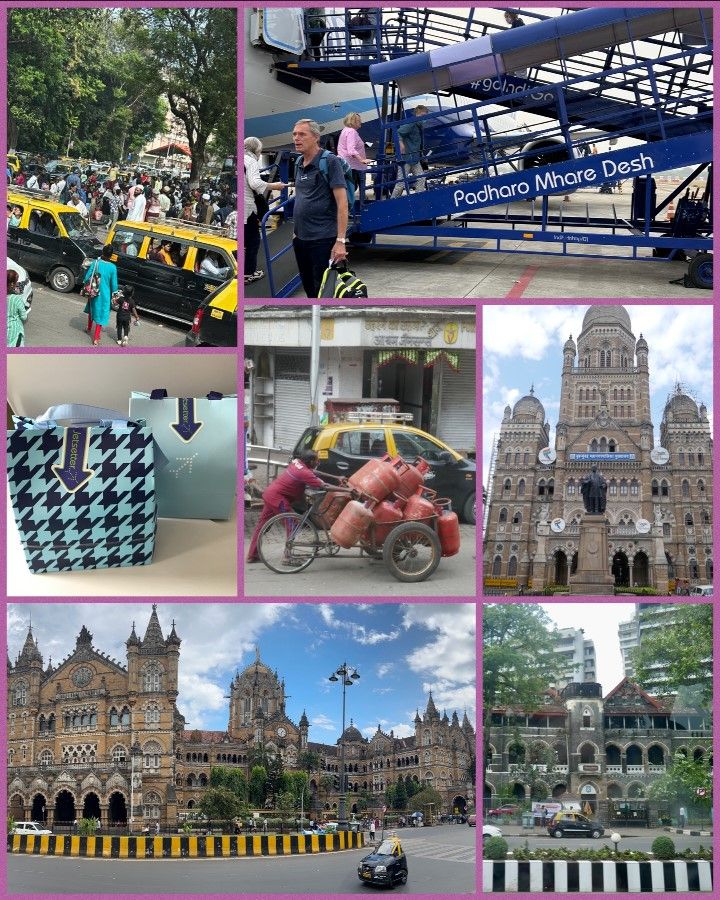
The waterfront, lined with Colonial and Art Deco buildings, a reminder of the Portuguese and British settlements. Not far away the main railway station, an extravaganza of Edwardian architecture.
The promenade is known as the Queens Necklace, due to its curved shape and dazzling night lights. Close by the Gateway to India - a triumphal arch, built in 1924 to commemorate the visit of King George V and Queen Mary back in 1911, as well as the elegant Taj Hotel.
Locals flock to walk along the promenade in the evenings and sit along the sea wall to watch the sunset - a shame the skies are a dismal grey, the sun completely obscured due to the thick pollution.
I read the pollution levels are better than usual though, as there has been unseasonal rain - still, most of us had sore throats.
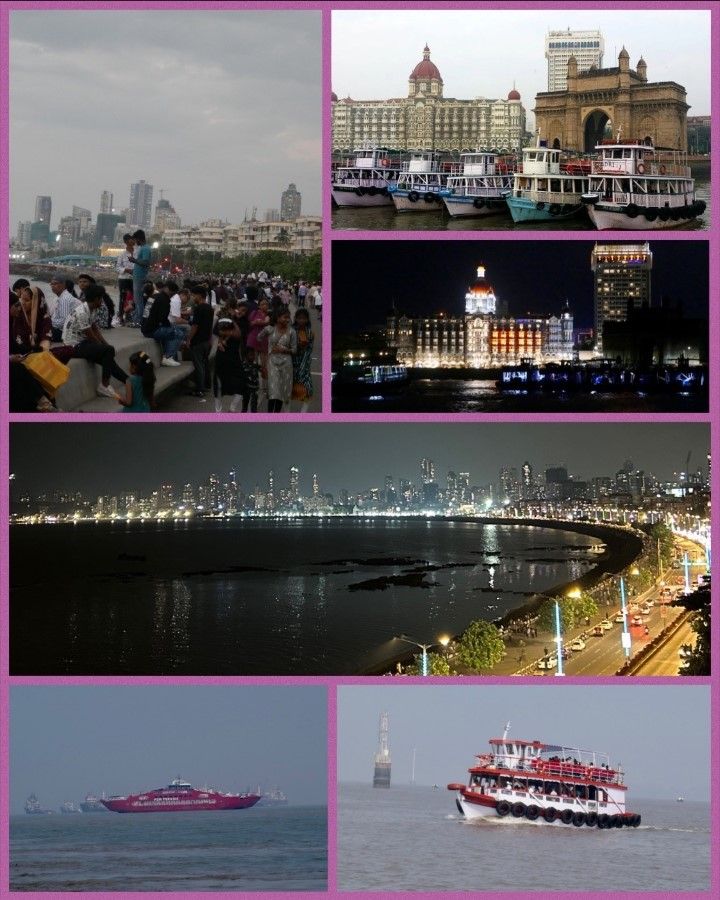
Our first adventure was visiting Elephanta Caves - an island of Hindu temple caves. We joined a fleet of ferries for the 1-hour trip across Mumbai harbour. It was hot and humid, the air murky, the harbour filled with tankers, tugs, defence vessels.
With all the locals we joined the crush to climb 150 or so steps to the caves - the path lined with souvenir stalls, ambling cows and cheeky monkeys - don’t be fooled they were out to nick our food and water bottles - clever enough to unscrew the tops!
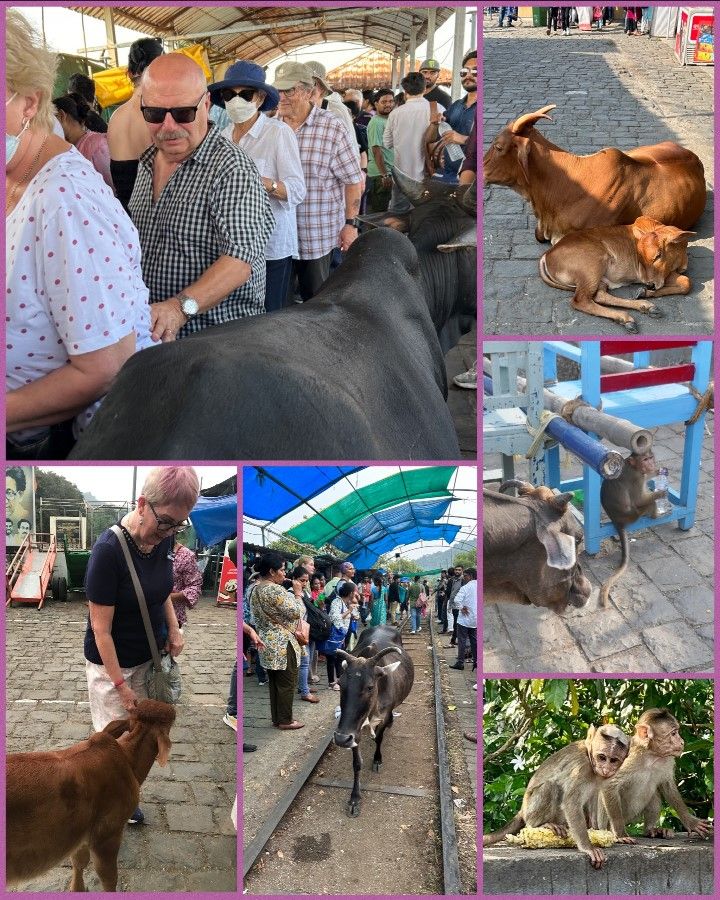
At the entrance of the cave, a 7m high sculpture of Sadashiva, representing three aspects of Shiva – the Creator, the Preserver, and the Destroyer.
It’s hard to comprehend how the caves were constructed around the mid-5th to 6th centuries CE, an incredible feat, with large and intricately designed reliefs. Just this one cave is 27 sqm with a depth of 39m, supported by rows of rock hewn columns.
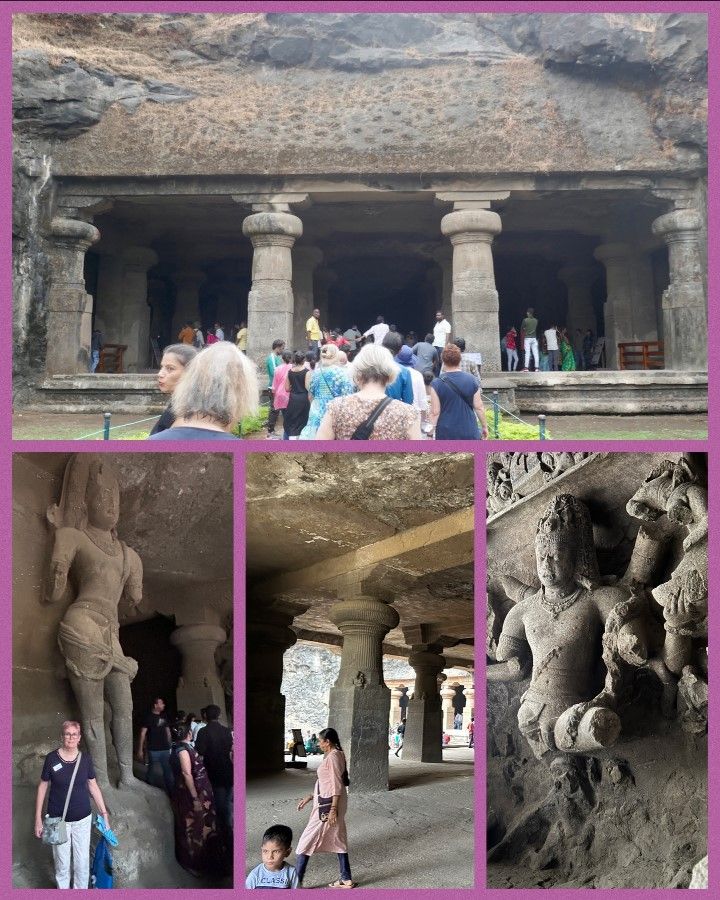
Returning we ran the gauntlet of the many souvenir stalls, uneven steps and crush of people. Reaching the bottom, exhausted, I was determined to catch the small toy train to the wharf - I’d walked enough!
That was a feat in itself - the locals pile on before anyone gets off and even before the train stops! Each little carriage should sit 6 – yet 12 seemed to squeeze in. I squirmed on with a child on my lap while others dangled out the sides! Quite an experience.
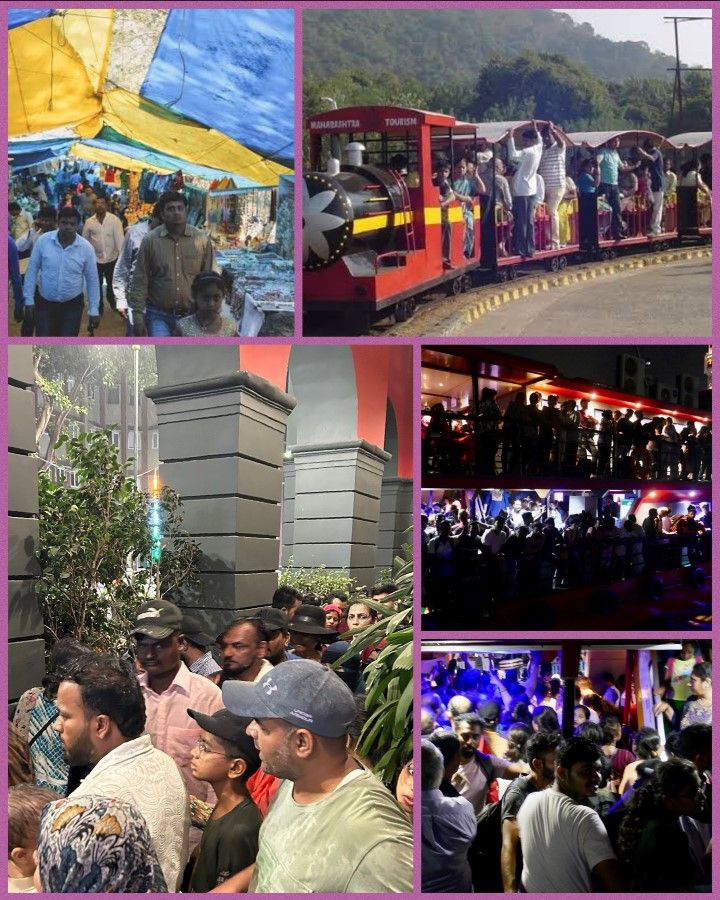
Back on board for the 2-hour trip back to town - luckily not too crowded on our ferry, however it was a debacle as around 15 ferries all vied for the same landing pier. One large day-cruiser overloaded with hundreds of passengers tried to push in - well he was the biggest and despite curses from all the ferry captains, got his way.
Finally, on what should have been dry land, the heavens opened! The monsoon was supposed to be over with no rain predicted. Where were our raincoats and umbrellas? On the coach of course! More pandemonium as we sheltered with hundreds of locals, although eventually we did get drenched.
Crushing crowds of people, torrential teeming rain - it’s all part of incredible India!
On our last day of the tour, we visited some of the unique sights of Mumbai. Firstly Mani Bhavan, the home where Mahatma Gandhi stayed during his visits to Mumbai, now a museum, research centre and library.
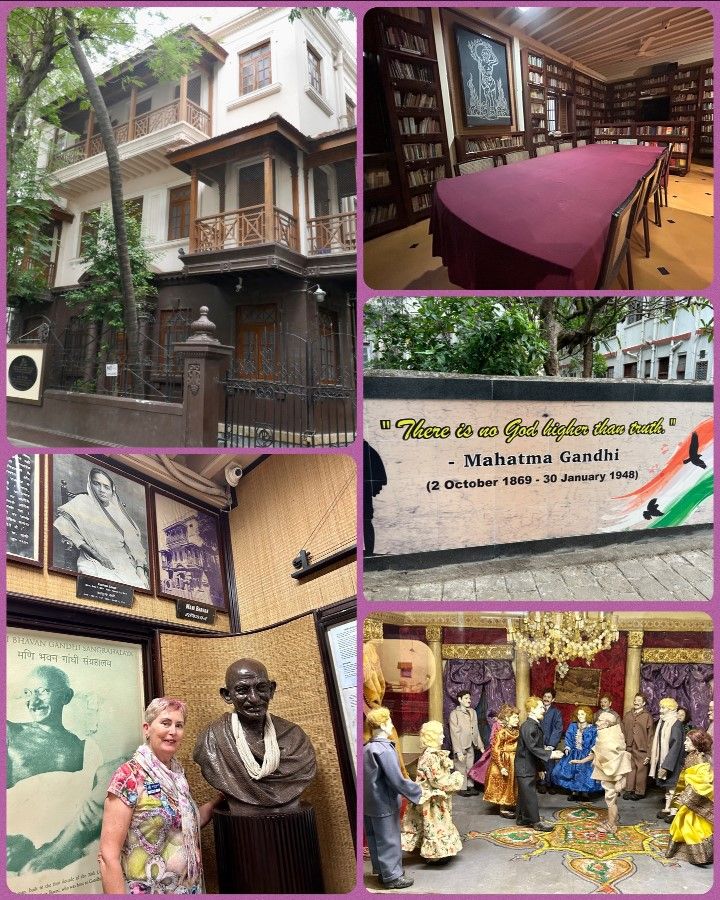
Posters of his famous quotes displayed as well as photos and memorabilia relating to the freedom movement and the important role Gandhi played in India's independence from British rule. 28 dioramas, each a work of art with handmade dolls presented key moments of the Gandhi’s life.
We saw some of the 5,000 Dabbawallas (those who carry a box) delivering lunches to office workers. These guys dress in a white outfit and traditional Gandhi Cap, delivering home-cooked lunches from the workers home to their office daily. It’s cheaper than buying lunch, the office workers pay around $10 a month for the service.
An ingenious system in place since 1890, with pickup points and distribution using only train and bicycle - every lunch is delivered at the right time to the right person. They never deliver the wrong box (except in the sweet movie The Lunch Box, written and directed by Ritesh Batra in 2013). Our postal authorities in Australia could learn a lot!
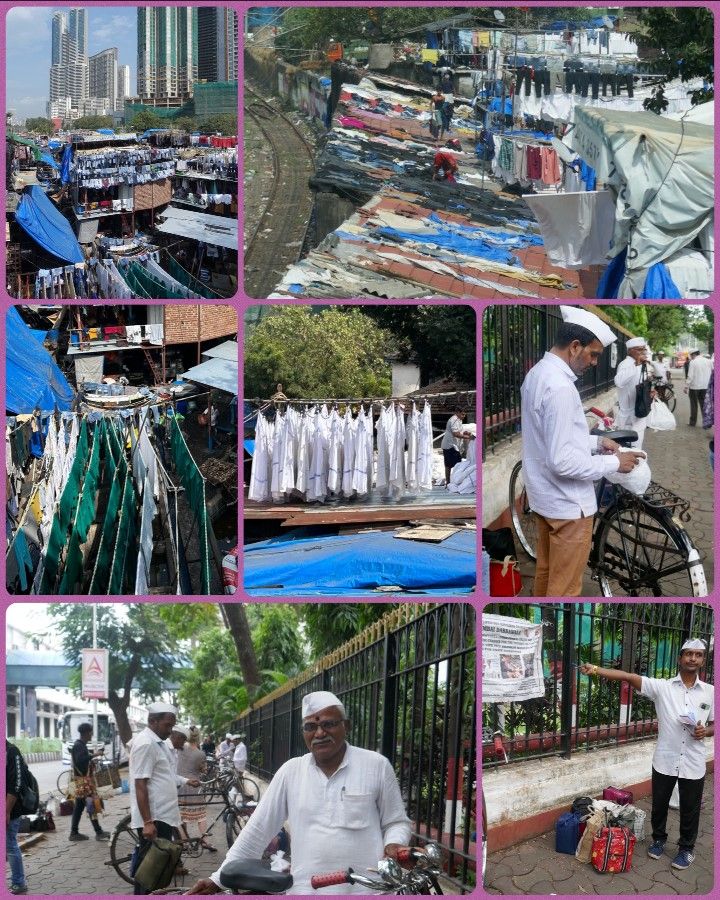
Here’s a 2 minute video on how it’s done:
Our next stop, Dhobi Ghat, an open laundry - lines and lines of clothes hanging out to dry, along the side of a railway line. It’s a labour-intensive process, although some modern machinery is used, most of the laundry is still done by hand.
The clothes are sorted and soaked in soapy water, before beating them on a flogging stone, then rinsing, drying and ironing. Used by hospitals, hotels and for those locals without their own washing machines. It’s cheap too. A shirt works out at 50 cents - and that includes pickup and delivery!
We visited Iskon Temple - many of us in Australia remember the Hari Krishna’s, chanting along our city streets back in our youth - well this temple is devoted to Lord Krishna. A beautiful temple and peaceful haven within this noisy, nonstop city - women are making flower garlands, devotees dropping in to pray. Even a wedding in progress.
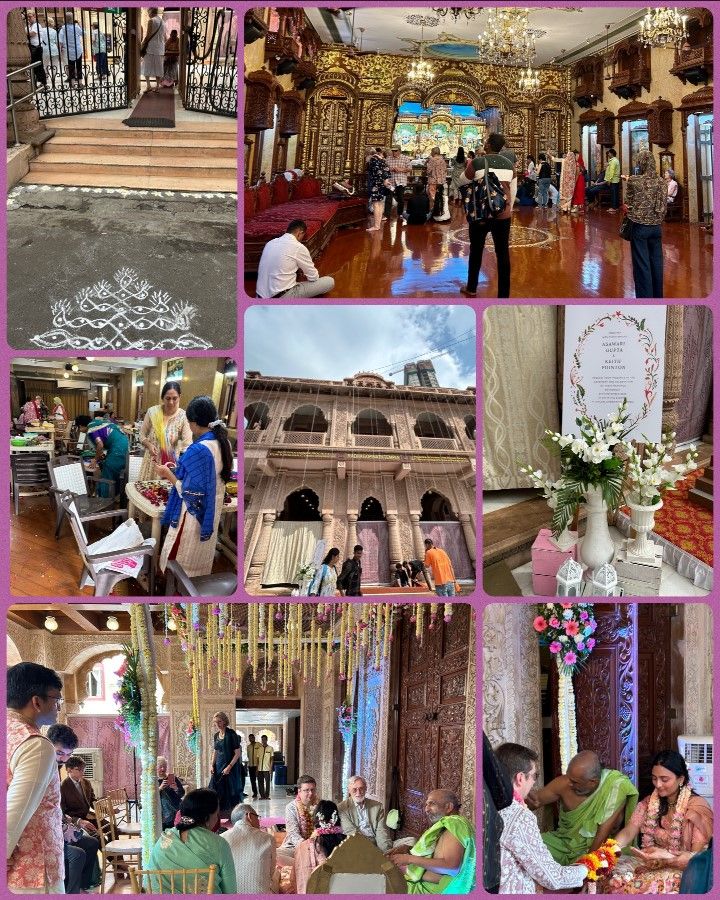
It’s wedding season in India -extravagant affairs, held over a number of days with hundreds or even thousands of guests invited. On this day, an intimate service with a blessing in this temple - we saw something similar in Jodhpur at a Hindu shrine near our hotel. Again, no need to sneak a peek - we were warmly invited to view the proceedings, at a respectful distance. The bride radiant, again the groom is a westerner, his Mum elegant in Indian attire.
From poverty to extreme wealth, we saw just some of the opulent palaces and lifestyles of the Maharajahs of bygone days. Today’s billionaires are businessman and entrepreneurs.
With the largest population in the world is it any wonder large corporations in the west are eyeing off such a lucrative market - even 10% of 1.2 billion: market share is a staggering number.
To experience a little of Mumbai sit back with your favourite beverage and enjoy an 8 minute overview of this diverse city.
And so, our tour of just a small part of India comes to an end. India is a country of contrasts - we’re told 21% of the people live below the poverty line, I doubt we saw very poor areas, yet everyone seems to get by, often surviving in very meagre circumstances, finding simple ways to make a living.
The markets and roads are chaotic - there are over 300 million vehicles on Indian roads, the third largest road network in the world - no wonder horns are constantly blaring and lights flashing; colour everywhere, people everywhere - jumping queues an essential skill - they do it effortlessly.
I didn't expect to be so enthralled with India. The pollution was bad, the crowds a challenge, all forgotten visiting fabulous sights and mingling with the people was an absolute joy.
As my travelling companion summed up:
There’s still much more of India to experience; riding the Darjeeling Railway, cruising on a houseboat in Kerala, staying at the Lake Palace Hotel in Udaipur. We’ll be back!
